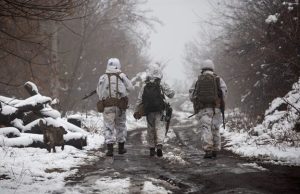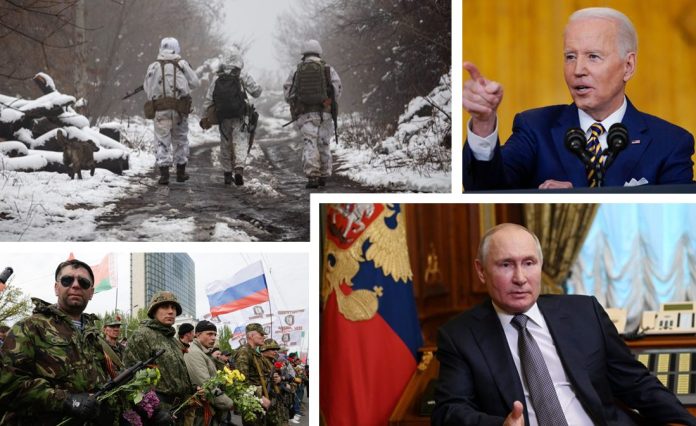On the 30th of November, 1939, the Union of Soviet Socialist Republics declared war on Finland, a much smaller country to the west, beginning what would be known as the Winter War. After months of fruitless negotiations, fears of attack by both sides, and Soviet demands for territory that were refused, the USSR launched a massive ground and air offensive with 760,000 men supported by thousands of tanks and artillery. The next few months saw horrific combat in freezing conditions, as the greatly outnumbered Finnish army conducted fighting withdrawals and ambushes on the Soviet Army. The Soviet army, through sheer force of numbers and material, won the war and forced concessions from the Finnish government, albeit at a heavy price.
Now, nearly 82 years later, Europe apparently stands at the brink of another war in the winter of 2022, this time between Russia and another smaller European country to its west: Ukraine. This potential conflict may have far reaching consequences. This article will discuss the political and historical context to the crisis in Ukraine, the present situation, and the future possibilities.
Historical Context
The USSR has long since been disunited, but Russian President Vladimir Putin, who has held power in the Russian government since May 7th 2000, has longingly wished for a return to Russian hegemony in Eastern Europe and Central Asia. During a speech to his nation in 2005, Putin said, “it is worth acknowledging that the demise of the Soviet Union was the greatest geopolitical catastrophe of the century,” and hinted at wishes for unification of previous USSR territories, mentioning that “it became a genuine tragedy. Tens of millions of our fellow citizens and countrymen found themselves beyond the fringes of Russian territory.”
Putin began a slow cultural and ideological shift within Russia, reintroducing the old Soviet national anthem, and the Soviet 5 star flag, while advocating for Russia’s political, economic, and military resurgence. He suspended the Russian constitution in 2012, rigged his elections multiple times, and arrested political opponents. He ordered assassinations of political enemies and Russian KGB defectors abroad, and acted as a peacekeeper in conflicts in the Caucauses and Central Asia.
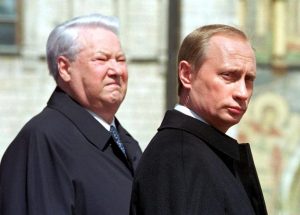
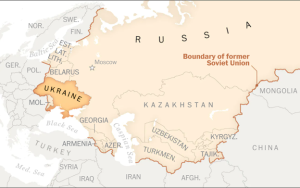
This began with military incursions into Chechnya in 2001, an invasion of Georgia in 2008, and support of Bashar Al-Asadd’s government in Syria in 2014. In the same year he began offering military support to Syria, Putin launched a swift invasion of Ukraine’s Crimean Peninsula, while Ukraine was in the midst of a civil war and political revolution. The occupation of Crimea, complete with propaganda campaigns, special forces operations, and threats of further escalation with Ukraine, was unopposed by the Ukrainian government. Putin used the excuse that the population in Crimea identified as Russian, and so he was protecting his people from a dysfunctional and collapsing state.
Putin then supported Russian separatists in the Donbass Region, an eastern region of Ukraine on the border with Russia that also was home to Russian ethnic groups. When Russian separatists in the Donbass declared independence from Ukraine, Ukraine was threatened with massive military buildups by Russia.
By April 2014, Ukrainian attempts to retake the Donbass failed, as Russian separatists received training, funds, and manpower (usually in the form of mercenaries, Russian intelligence operatives, and militias backed by the Kremlin) to beat off Ukrainian attacks. Two new nations were formed in the east, the Donetsk and Luhansk People’s Republics. These two separatist states have been fighting Ukraine since 2014, with Russian support.
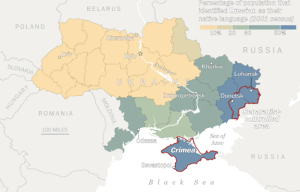
Source: The Washington Post
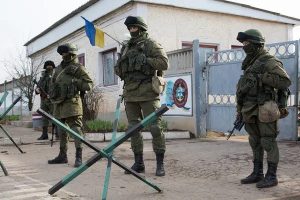
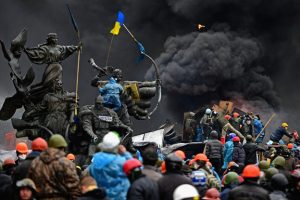
By January 2022, the Crimean Peninsula and Donbass regions are still in Russian and Separatist hands, although the Ukrainian government has recovered from its previous political unrest. Two past American Presidents, Barack Obama and Donald Trump, have sent Ukraine military hardware and supplies, including Javelin anti-tank missiles, ammunition, and 150 U.S military advisors and trainers for the Ukrainian Army. Current President Joe Biden appears to be continuing this trend, as in the spring of 2021, he unveiled a plan to send Ukraine radar sets in an attempt to mitigate Russia’s vast superiority in artillery systems.
The Present
In July 2021, Putin wrote an essay titled “On the Historical Unity of Russians and Ukrainians,” calling for political unity with his embattled neighbor to the west. Recalling from history that a previous capital for Russians and Ukrainians was Kiev, he stated “I am confident that true sovereignty of Ukraine is possible only in partnership with Russia.”
While Ukrainian President Volodymyr Zelenskyy responded by joking “I am envious that the president of such a great power can permit himself to spend so much time [writing] such a volume of detailed work,” many political analysts were seeing as anything but that. Melinda Haring, deputy director of the Atlantic Council’s Eurasian Center, commented: “Putin’s delusional and dangerous article reveals what we already knew: Moscow cannot countenance letting Ukraine go.” In the months to come, Putin’s declaration would prove to be an ominous act of foreshadowing.
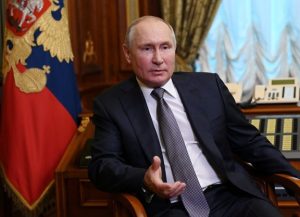
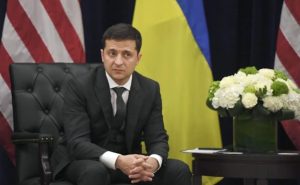
Previously in 2021, Russian troops began massing equipment near the Ukrainian border. This had happened several times in years past since 2014, but by September 2021 there were 100,000 troops, the most Russia had ever mobilized since 2014, were massed near the border. Despite assurances from Russian Minister of Defense Sergey Shoigu that they were stationed for training exercises, Ukrainian intelligence officials warned of the largest concentration of Russian forces on the border since 2014.
Satellite imagery showed Russian military formations, usually stationed in Moscow or Siberia during this time of year, being garrisoned miles from the Ukrainian border. In Russian territory east of Ukraine, Russian troops held military exercises and life firing drills. By December 2021, the U.S Central Intelligence Agency (C.I.A) and British MI6 (Secret Intelligence Service) were warning of a possible Russian attack by January 2022.
The North Atlantic Treaty Organization, a military alliance spearheaded by the US that incorporates countries in Europe and North America, has long been interested in incorporating Ukraine into the military alliance. With Russia appearing to use military force to threaten Ukraine, military officials in the alliance were worried that the seizure of Ukraine by Russia would allow Putin to place Russian military assets into Central Europe. NATO soon rose to support Ukraine’s sovereignty and independence, drawing in the potential for a global war between Russia and NATO. By December 2021, Putin suddenly demanded several terms from the NATO:
-
- The scaling back of NATO’s military presence in Eastern Europe to pre 1997 levels.
- The barring of Ukraine from joining NATO.
- Prohibition of NATO to hold military exercises in Eastern Europe or Central Asia without Russia’s permission.
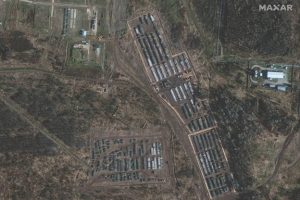
Satellite image of the Russian 1st Guards Tank Army in Western Russia near the Donbas region. The 1st Guards Tank Army’s presence near Ukraine, when it usually is located in Moscow during the winter, alarmed Western officials. (Source: Politico) 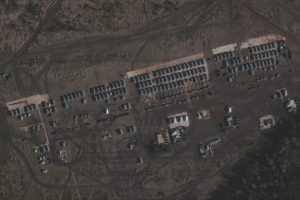
Satellite image of Russian troop tents and administrative areas near Ukraine. (Source: Politico) NATO’s initial response was driven for a desire to avoid war with Russia over Ukraine – and so they turned to negotiations to cool down the potential for conflict. By the end of the year, U.S Secretary of State Anthony Blinken began formal talks with Russian Foreign Minister Sergey Lavrov, although these chalked out to nothing.
By January 10th, Russian Deputy Foreign Minister Sergei Ryabkov stated “We are fed up with loose talk, half promises. Ukraine and Georgia will never — never ever — become members of NATO,” repeating Russia’s main geopolitical goal – to prevent bordering nations becoming allied with the U.S led NATO alliance. Russia has become determined to become regional hegemon over Eastern Europe, the Caucuses and Central Asia and has become irritated at what it perceives as a foreign attempt to occupy and operate in their backyard.
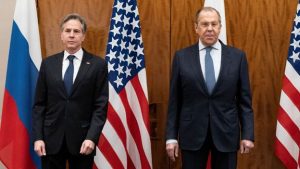
U.S Secretary of State Anthony Blinken meets with Russian foreign minister Sergei Lavrov in Geneva, January 21st 2022. Rounds of negotiations are ongoing but have thus far been unsuccessful. (Source: CNBC)
By January 19th, U.S President Joe Biden held a press conference for two hours in Washington D.C. and talked about increasing tensions in Ukraine. Although his range of topics included inflation and voting rights, he discussed the ongoing situation in Ukraine.
“What you’re going to see is that Russia will be held accountable if it invades and it depends on what it does,” he said. “It’s one thing if it’s a minor incursion, and then we end up having to fight about what to do and not do etc.” Biden, who has previously pledged not to send U.S troops to Ukraine, was criticized for his comment on a Russian “minor incursion,” which Ukrainian president Volodymyr Zelenskyy replied on Twitter with “We want to remind the great powers that there are no minor incursions and small nations… Just as there are no minor casualties and little grief from the loss of loved ones. I say this as the President of a great power.” Biden would later backtrack and say that any Russian military action in Ukraine would be seen as an invasion and would be responded to with serious consequences.
Those consequences, mostly economic, are also a topic of debate. The U.S has discussed with NATO allies, including the United Kingdom, to impose severe economic sanctions on Russia, including freezing all Russian assets outside of the country. For an economically stagnant nation like Russia, that has more money outside of the nation than in it (usually in Cypriot or Latvian bank accounts) this would deal a serious economic blow, and force Russia to rely on China or Central Asia for commerce and trade. It would likely lead to the economic isolation of Russia, and for months afterward there would be very tense relations in Europe as the invasion of Ukraine occurred.
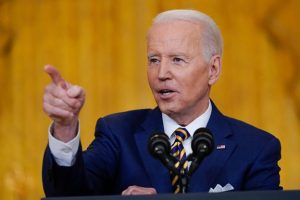
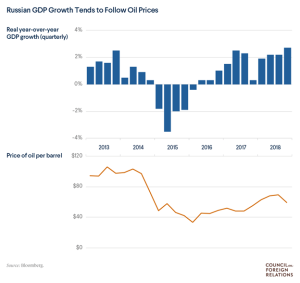
Across Europe, NATO’s response has been the same – determination to support Ukraine with war material, but a refusal to send NATO troops to defend Ukraine should Russia invade. This is likely born out of a desire to prevent a new continental war in Europe erupting and to avoid an escalation of conflict.
But NATO appears ready to deploy troops to neighboring Poland and the Baltics, or in the Baltic or Black Seas, as an attempt to show Russia that By January 23rd, the U.S ordered the 8,500 soldiers of U.S Army Europe on standby for potential military action, and further troop deployments were considered by the United States. And in January, family members of U.S staff in the American Embassy in Ukraine were ordered to evacuate.
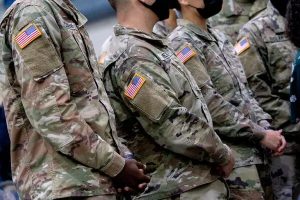
Among the Ukrainian government and people, there is a mix of resolve, fear, uncertainty, and confusion. Ukrainian President Zelenskyy has pledged to defend Ukraine against Russian attacks. But he does assert that rumors of Russian invasion are “rumors among neighbors” and that the Ukrainian people should not worry. Defense Minister Oleksiy Reznikov has declared that if Russia invades, “there will be a really bloody massacre… Russians will come back in coffins.” On the issue of whether or not the defense minister wants American troops to defend Ukraine, he responded: “We don’t need troops, because I think it’s not so fair that American soldiers will die in Ukraine. No, we don’t need it,” stressing that what Ukraine needs to defend itself would be military equipment and supplies.
And throughout the winter, Ukraine has been calling up over 100,000 reservists to reinforce their outnumbered army. The Ukrainian military has also drafted thousands of civilians into the reserve corps, including veterinary students, architects and old reservists with previous military training. As Ukraine did in 2014, they might call upon these hastily prepared and trained citizens to defend their country should the army fall apart.
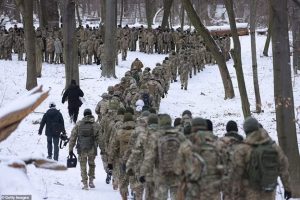

The Ukrainian population, beset by economic troubles and COVID-19 outbreaks, isn’t united on focusing against the Russian threat. Although some believe a possible invasion plausible and worth preparing for, others see it as a continuation of Russian aggression in Eastern Europe.
“It became kind of normal to say, ‘What, again?’ I think its going to be a nightmare, like Syria” remarked Ukrainian Danylo Kovzhun in an interview with the Wall Street Journal. Mr. Kovzhun said: “There are millions buried here. There was heavy fighting here forever, every hundred years. We will have heavy losses. But I don’t think Russia is capable of overcoming this country.”
Despite alarming reports of Russian military buildup in the east, the Ukrainian population seems vigilant but are not panicking. As the Wall Street Journal reported, “There are no bank runs. The currency has lost only a little value against the U.S dollar compared with earlier crisis.” In Kiev’s downtown a manager of a cocktail bar, Bohdan
Chehorka, told the Wall Street Journal that he noticed no alarm in his customers throughout January.
As winter rages on, it appears the future of Eastern Europe hangs in the balance. Although many say that Russia will invade Ukraine for the purposes of ethnic unification, some disagree. Pointing to past records of Russia backing down from military interventions in Estonia in 2007 and Central Asia in 2010. A lack of economic or political gain in Ukraine – the small nation has no large industrial base and little natural resources to take, in addition to the fact that Russia would certainly incur heavy losses taking the country – gives no real justification for Putin to invade, other than a flimsy excuse for cultural unification.
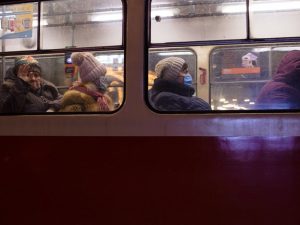
The Future
There are multiple courses of action available to Putin in the coming months, including a full military invasion of Ukraine, proxy warfare in Ukraine as Russia supports pro-Russian separatists, or simply nothing. Putin may well back down in a few weeks and surface a few years from now with another smaller nation state to threaten and force concessions. But if Putin does not choose peace, and he orders his military to invade, then we could see a very bloody winter in 2022. When comparing the two nation’s militaries, Russia has the clear edge.
Ukraine, a former member of the USSR, has around 209,000 men at its disposal. It also has around 200,000 reservists and another 500,000 civilians who have received military training. The quality of Ukraine’s army is adequate for defensive purposes, although as the war drags on Ukraine will find itself short of experienced troops, armored vehicles, and specialized equipment.
Russia has nearly 900,000 men at its disposal. It has another 2,000,000 reservists, many of whom are being called up for training exercises in Russia in what appears to be preparation for conflict.
Ukraine’s air force is extremely small compared to Russia’s. Russia also has a more potent navy than Ukraine, as Ukraine only has 17 naval vessels, mostly patrol craft. Russia’s Black Sea fleet alone has 43 surface warships, including cruisers and destroyers. In a war between Russia and Ukraine, the former would, as in the words of retired U.S Army four star general Philip Breedlove, “Own the air and sea.”
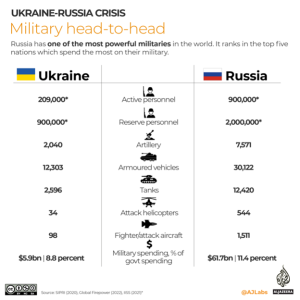
However, Ukraine could learn from Finland’s war with Russia in 1939 and conduct guerilla operations behind enemy lines, disrupting Russian supply chains and their ability to strike further west. Like Finland, Ukraine’s citizenry appear to be ready and mobilized for a possible invasion, and throughout the Winter War the Finns fought with unseen determination and rigor, inflicting huge casualties on the invading Soviet army.
As Foreign Policy comments: And “Ukraine’s armed forces can also learn a few military lessons from Mannerheim’s (the Finnish chief military commander) men. ‘Small Finnish groups came skiing in our troops’ rear and cut our supply chains,’ a Soviet soldier later recounted. ‘In the middle of December, our tanks were without fuel, the horses that pulled the artillery were without oat, and the soldiers were without food.’ Many of the tanks were, at any rate, rendered useless by other white-clad Finnish soldiers on skis throwing Molotov cocktails into the tanks’ turrets.”
Even if Ukraine’s main army is defeated, the logistical challenges of occupying such a large nation would be signficant. All the while, the Ukrainians would be fighting for their very survival as an independent nation, and a coordinated attempt at guerilla warfare and delaying tactics would certaintly frustrate Russian attempts to easily win a ground war.
Neverthless, here are possible invasion plans and options Russia has at its disposal to invade Ukraine:
Option 1: Cut off Ukraine’s Army
This scenario would include initial heavy losses of life, but then the rapid encirclement and destruction of Ukraine’s army, leading to a potential capitulation by the government in Kiev. Most of Ukraine’s army is located in the Donbas region, in the far east of the country. This is because of the high concentration of separatists in the region, which Ukraine has been attempting to isolate for several years. Russia, which has troops stretched all across the border with Ukraine including the Crimean Peninsula, could launch a wide flanking attack to attack the Ukrainian army’s rear in the Donbas, and virtually surround the Ukrainian army. Following this, the destruction of most of Ukraine’s ground forces would be inevitable. Russia could then drive on Kiev and finish the war quickly.
Russia could preempt this by launching massive waves of artillery and rocket fire at Ukrainian frontline positions, wreaking havoc and destroying communications and effectively cutting off forward Ukrainian units. It’s what the Germans did during the Battle of the Bulge, and it allowed them to isolate and wipe out forward pockets of American troops during the early stage of the battle.
The head of Ukraine’s Foreign Intelligence Service, General Kyrylo O. Budanov, spoke in an interview with the New York Times on how a war would play out in Ukraine. As the New York Times reported, “General Budanov outlined his nightmare vision of a Russian invasion that would begin with airstrikes and rocket attacks aimed initially at ammunition depots and trench-bound troops. ‘Very quickly,’ he said, ‘the Ukrainian military would be incapacitated, its leadership unable to coordinate a defense and supply the front.’ After that, he said, ‘responsibility would fall to frontline commanders to carry on the fight alone.’”
General Budanov seemed determined that “they [the Ukrainian military] will hold out as long as they have bullets… They’ll be able to use what they have in their hands, but believe me without delivery of reserves, there’s not an army in the world that can hold out.”
Should Russia begin its attack on Ukraine with a ground operation, the results would be devastating on Ukraine. Robert Lee, a Ph.D. candidate at King’s College in London, told the New York Times that “Russian missiles could wipe out a significant part of the Ukrainian military in less than an hour.”
This potential military action would see Russia effectively destroy Ukraine’s main land army, leaving the capital defenseless. This would also shed little blood, as Ukrainian forces trapped in the Donbas may be compelled to surrender. With their army destroyed, the Ukrainian government may give concessions to the Russians, as the Finns did with the USSR in 1940.

Option 2: The Big Red Arrow:
This scenario is the most conventional (and bloody) invasion plan Russia could choose to implement. The “Big Red Arrow” (named so by retired U.S Army General Ben Hodges who commanded U.S Army Europe from 2014 to 2017) entails Russia using the full might of its army, navy, and air forces to advance upon, destroy resistance, and then occupy Ukraine.
This invasion, in contrast to the previous act of encircling enemy forces in a relatively small area in the Donbas, would see combat all across Ukraine, from Crimea in the south to Kharkov in the north. Russia’s overwhelming superiority in firepower, troop numbers, aircraft, and armored vehicles would allow it to overwhelm and annihilate resistance in front of it. The Ukrainian army is thinly stretched, and doesn’t have the material to resist the worlds 4th largest military budget.
The “Big Red Arrow” strategy would likely involve shock and awe tactics, popularized by the U.S’s initial swift victories in the First and Second Gulf Wars. However, this invasion on all fronts would see significant casualties on all sides, which would damage Putin’s hopes of an easy unification between Russia and Ukraine. It also would virtually destroy the same country Putin is trying to sway over to his cause, and lead to larger civilian casualties. Thus, the Big Red Arrow is considered the least likely amongst analysts.
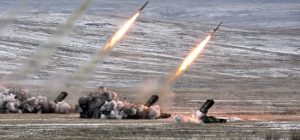
Option 3: Support Separatist holdouts
Yet another option for Putin is to send significant amounts of material and troops into the eastern separatist strongholds in Ukraine. Although many analysts say Putin already has sent Russian troops into these separatist strongholds, a public show of force would confirm this, and send further warnings to the West. Ukraine wouldn’t launch any further attacks into the region to avoid Russian response, and it would ramp up pressure on the West to respond. Absent a direct military invasion, some NATO members are unwilling to give heavy economic sanctions to Russia, citing economic costs, and it may splinter the coalition. Eventually, if NATO fails to respond, Russia may expand or follow on with option 1 or 2.
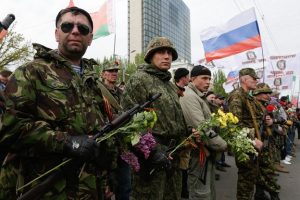

Conclusion
Although other analysts have pointed out more avenues of approach for the Russians to take, and events will continue to develop in the days to come, the future remains unclear. There are still many who insist Russia will choose a non-confrontational method like Option 3 or simply back down. However, should Russia invade Ukraine, what the United States does to respond will have international consequences. Following the disastrous exit from Afghanistan, the world looks on to see how the United States will respond to Russia’s aggression in Ukraine. The next few weeks will be critical in how this story unfolds, whether through violence or through peace. If a second winter war in Europe erupts, it may just be a prelude of things to come.
